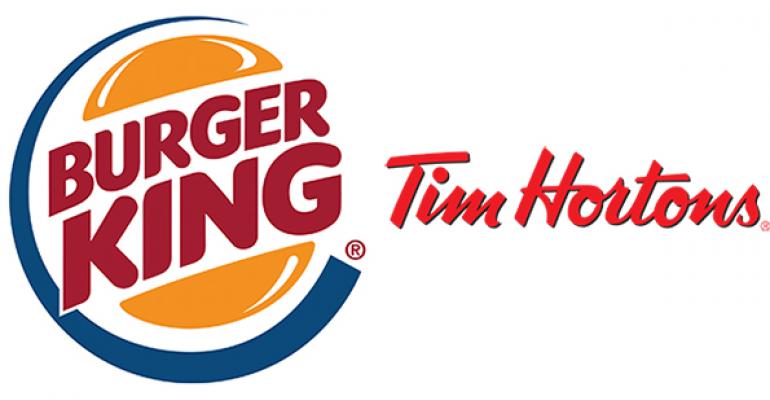More than half of Burger King’s locations are now outside the U.S. following years of aggressive expansion, and now parent Restaurant Brands International Inc., wants to do the same with Tim Hortons.
Executives with Restaurant Brands International said on Tuesday that the success of the merger of the two brands would be judged on Tim Hortons’ ability to expand outside of its home market. The vast majority of the chain’s 4,700 units are in Canada or the U.S.
“There’s a tremendous opportunity for international growth,” said Daniel Schwartz, CEO of Restaurant Brands International. “But as we saw with Burger King, this process takes time. Don’t expect a big change in the pace of development in 2015.”
Miami-based Burger King has grown rapidly in international markets, where it added 735 locations in 2014. But it has been stagnant in the U.S. and Canada, where it declined by 30 units last year. Including Canada, Burger King now has about 7,200 of its 14,366 units outside the U.S.
Owned by Brazilian private-equity group 3G Capital, Restaurant Brands International wants to use the same joint venture expansion strategy with Tim Hortons that Burger King used successfully to expand in foreign markets.
“That’s what’s going to define success here,” Schwartz said.
Tim Hortons will also emphasize premium products and build lunch and dinner business in Canada. In the U.S., which executives consider a “must win,” and where Tim Hortons has struggled to gain a major foothold, the company plans to expand in core and “priority” markets through traditional development agreements.
In Canada, Tim Hortons franchises through owner-operators and controls their real estate. In the U.S., the chain will expand through development agreements with “strong restaurant partners.” Executives said they are also rethinking the design of their U.S. locations to focus on cost savings and improve unit economics.
Restaurant Brands International hasn’t wasted time making changes at Tim Hortons. In January, the company laid off 350 employees at Tim Hortons’ headquarters in Canada.
Executives said they don’t foresee further layoffs, and noted that the departures were in areas where the two companies should combine some back-office operations, such as the finance and legal departments.
“Those changes were largely driven by those areas,” Schwartz said. “We didn’t make any changes in marketing or guest-facing areas. It’s really back-of-house departments to leverage synergies between the two companies.”
He added that the two brands would be operated separately, with their own management teams and unique marketing, development, operations and real estate departments.
Burger King’s earnings before interest, taxes, depreciation and amortization, or EBITDA, rose 3.8 percent, to $189.1 million, from $182.1 million during the fourth quarter ended Dec. 31. Revenue rose 3.4 percent, to $274.2 million. Global same-store sales rose 3 percent. In the U.S., same-store sales rose 4.2 percent for the quarter and 2.1 percent for the year.
For the year, Burger King’s revenue fell 7.9 percent, to $1.06 billion, from $1.15 billion, due entirely to refranchising, which led to lower revenues. EBITDA for the year rose 10.6 percent, to $726 million.
Executives said that the chain’s strategy of fewer, “more impactful” and “operationally simple” products helped sales for the year. Most notable was the return of Chicken Fries in August, which Schwartz said was its most successful product since 3G bought Burger King in 2010. It also helped lead to the chain’s best month for sales in the U.S. since 2008, Schwartz said.
Franchisees have remodeled 40 percent of Burger King’s system in the U.S. and Canada, Schwartz said, a year ahead of its goal. Reimaged restaurants have reported sales increases of 10 percent to 14 percent after remodels.
Tim Hortons’ fourth-quarter EBITDA rose 1.6 percent, to $208.6 million, from $204.8 million. Revenue fell 3.7 percent, to $824.7 million, from $856 million. Same-store sales rose 4.1 percent during the quarter, including 4.1 percent in Canada and 5.1 percent in the U.S.
For the year, EBITDA rose 3 percent, to $816 million, and revenue was flat, at $6.6 billion.
Contact Jonathan Maze at [email protected].
Follow him on Twitter: @jonathanmaze

